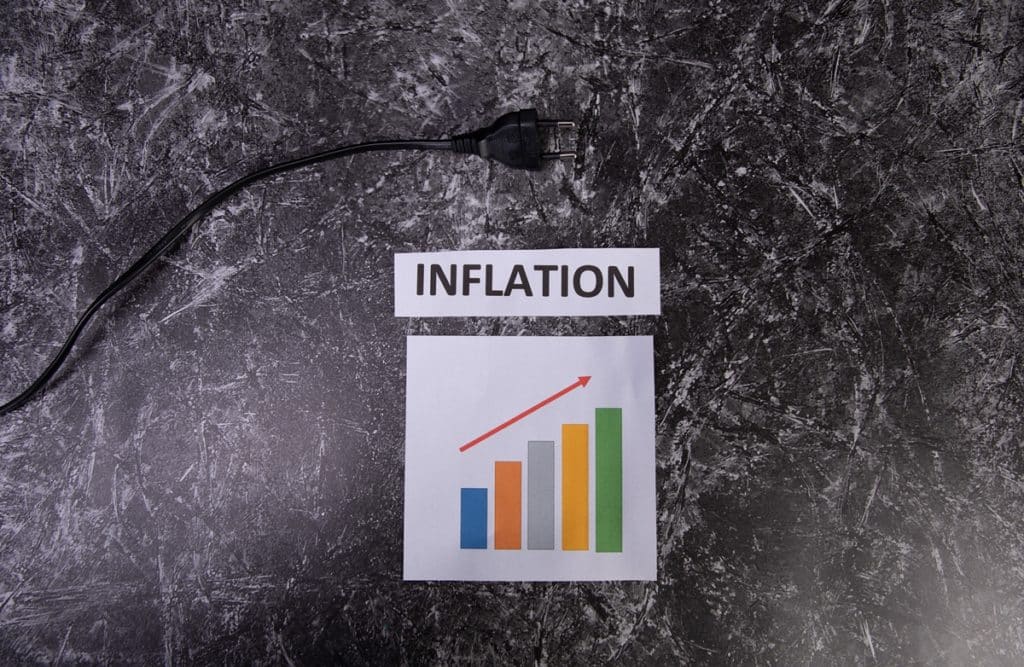Inflation, the general rise in prices of goods and services over time, is a well-recognized economic phenomenon. While the causes and types of inflation can vary, the costs associated with even perfectly anticipated inflation (inflation that is expected and predictable) can be significant. This guide delves into the reasons behind these costs and offers strategies for businesses to stay cost-competitive in the face of inflation. Here is a detailed answer to a question why does perfectly anticipated inflation impose costs.
The Costs of Perfectly Anticipated Inflation
1. Menu Costs
Menu costs refer to the expenses businesses incur when they need to adjust and change their prices. The term “menu” is metaphorical, derived from the cost a restaurant might incur when reprinting its menu after a price change.
In a broader context, it encompasses the resources and time spent on updating pricing systems, from digital databases to physical tags. Even in environments with minimal inflation, frequent price adjustments can be necessary due to various market factors. These costs, though seemingly trivial, can become significant, especially for businesses with a large number of products or those that operate in volatile markets.

2. Shoe-leather Costs
Shoe-leather costs metaphorically describe the expenses and inconveniences associated with avoiding holding money during times of high inflation. The term originates from the imagery of people “wearing out their shoe leather” by making frequent trips to banks or ATMs to minimize the amount of cash they hold, as its value erodes quickly.
In a broader economic context, it refers to the resources and time expended to manage cash balances efficiently in an inflationary environment. Essentially, as individuals and businesses seek to reduce the adverse effects of inflation on their cash holdings, they incur these metaphorical “shoe-leather” costs.
3. Distorted Tax Liabilities
Distorted tax liabilities arise when tax codes don’t adjust swiftly to inflation, leading to inadvertent increases in effective tax rates. For instance, if capital gains taxes don’t account for inflation, individuals might pay taxes on the nominal gains, which include both real gains and inflation-induced gains, rather than just the real increase in value.
This can result in taxpayers shouldering a heavier burden than intended, particularly in high-inflation scenarios. These distortions can dampen investment incentives and have broader economic implications, as the tax system inadvertently penalizes income or returns that aren’t actually realized in terms of purchasing power.
4. Distortion of Interest Rates
Distortion of interest rates occurs when inflation impacts the nominal interest rates set by central banks or financial markets. In the presence of anticipated inflation, nominal interest rates tend to rise, even if real interest rates (nominal rate minus inflation) remain constant. This can mislead borrowers and lenders, affecting their decision-making processes.
For instance, higher nominal rates might deter potential borrowers, even if the real cost of borrowing hasn’t changed. Such distortions can impede efficient capital allocation in the economy, potentially slowing economic growth and affecting long-term investment decisions. It underscores the importance of distinguishing between nominal and real interest rates.
5. Uncertainty in Long-term Contracts
Uncertainty in long-term contracts arises when predicting future economic conditions, like inflation rates, becomes challenging. While a contract might be set with current market conditions in mind, unforeseen economic shifts can alter its profitability or feasibility. For instance, if inflation rates rise more than anticipated, a fixed-price contract could result in losses for a supplier.
This uncertainty makes long-term planning difficult and might necessitate clauses that allow for price adjustments based on future inflation or other economic indicators. Such unpredictability can deter businesses from entering long-term agreements, potentially hindering stability and growth in certain sectors.

Strategies for Staying Cost Competitive
In an ever-changing economic landscape, businesses are continually confronted with the challenge of maintaining a competitive edge while managing costs. A balanced approach, integrating both innovative and traditional strategies, can optimize profitability without compromising on quality. Below, we delve deeper into various strategies to stay cost-competitive:
- Dynamic Pricing: By using technology to adjust prices based on real-time market data, businesses can address fluctuating demand and supply conditions. This ensures they remain competitive while covering variable costs, particularly in fast-paced markets.
- Efficiency Improvements: Streamlined operations, powered by technology, can lead to faster processes and reduced waste. Automation, lean manufacturing techniques, and staff training can significantly diminish production costs and elevate output quality.
- Supply Chain Optimization: Regularly reassessing and renegotiating supplier contracts can unearth cost savings. Diversifying suppliers minimizes risk, and just-in-time inventory practices reduce storage and holding expenses, making operations more agile.
- Diversification: Spreading operations across various markets or product segments provides a safety net. If one sector faces a downturn, gains in another can balance the losses, stabilizing revenue streams.
- Cost Monitoring: Implementing rigorous cost audits and using analytics can pinpoint wasteful practices. By identifying and rectifying these inefficiencies promptly, businesses ensure optimal resource utilization and prevent monetary leakages.
- Hedging: Financial instruments can safeguard against unexpected spikes in commodity prices or adverse currency fluctuations. By locking in prices or exchange rates, businesses can forecast costs more accurately and protect profit margins.
- Flexible Contractual Terms: Introducing clauses that allow for periodic renegotiation or price adjustments based on market conditions provides a buffer against unforeseen cost escalations, preserving profitability in long-term engagements.
- Outsourcing and Offshoring: Transferring certain non-core operations to regions with lower operational costs can drastically reduce expenses. However, it’s vital to ensure that quality standards are maintained and that the regions chosen are politically and economically stable.
- Invest in Research and Development: Pioneering new products or improving processes not only provides a competitive advantage but can also lead to reduced production costs. Innovations can command premium pricing and expand market share.
- Employee Training and Retention: Investing in employee skill enhancement boosts productivity. Simultaneously, retaining seasoned staff cuts down the recurrent costs and disruptions of hiring and training newcomers.
Armed with these strategies, businesses can craft a flexible, adaptive approach to cost management, ensuring sustained profitability amidst evolving market dynamics.
Conclusion
While perfectly anticipated inflation might seem benign compared to its unpredictable counterpart, it still poses substantial economic costs. Businesses that understand these costs and employ strategies to combat them stand a better chance of maintaining profitability and competitiveness. As inflation is an inherent part of many economies, proactive management and constant adaptation are essential for long-term success.
